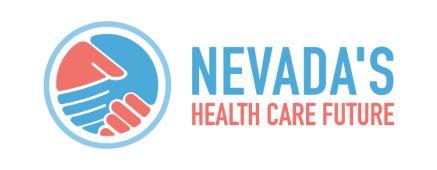New Analysis: Nevada Public Option Could Increase State’s Already Significant Health Care Provider Shortage
Public Option could reduce health care competition, force insurers to exit the market, and threaten access to care for patients
CARSON CITY, Nev. — A new actuarial analysis conducted by Wakely Consulting Group finds that Nevada’s new government-controlled health insurance system, known as the Nevada Public Option, risks further exacerbating Nevada’s already significant health care provider shortage. The report finds that the law could also reduce health care competition in Nevada, cause some insurers to exit the market, deter new entrants, put increased financial hardship on hospitals, and ultimately threaten access to care for patients.
Nevada is already suffering from a physician shortage, ranking 48th in the nation in primary care physicians per capita.
The report, commissioned by Nevada’s Health Care Future, includes an actuarial analysis of the potential effects of the Nevada Public Option, which was passed by the Nevada Legislature in 2021, was signed into law by former Governor Steve Sisolak, and is set to take effect in 2026. The analysis also reviews the State of Nevada’s own 2022 actuarial report on the law overseen by the Sisolak Administration.
Background:
In December 2022, the State of Nevada released an actuarial and economic analysis to estimate potential federal pass-through funding related to the establishment of a public option under an Affordable Care Act (ACA) Section 1332 waiver. This analysis assumed that all premium reduction requirements in Nevada Senate Bill 420, which created the Nevada Public Option, could and would be fully realized throughout the state.
The Wakely analysis reviews several factors that the prior State actuarial and economic analysis did not consider. The analysis asserts that the projections in the State’s December 2022 study would have been different if consideration had been given to which assumptions were realistic to achieve.
Key findings from the Wakely analysis include:
- Physician rates, on average, are likely already at or near 100% of Medicare Fee-for-Service. Because the Nevada Public Option statute has a floor for average physician reimbursement at 100% Medicare FFS, little to no Nevada Public Option premium savings can be expected via physician reimbursement cuts. Further, Nevada is facing a significant provider shortage, which could be further exacerbated by reduced reimbursement rates.
- A 3% increase in loss ratio could reduce a low-cost insurer’s risk margins to 0%. The analysis notes that a 0% risk margin does not allow for an actuarially appropriate margin of error in estimating claims and risk adjustment expenses and could have negative implications for competition, deter new entrants, and potentially cause some insurers to exit the market.
- To reduce premiums by 16%, the hospitals reimbursement rates may need to be reduced by 25-30%. Cuts of this magnitude may put financial hardship on hospitals whose overall margins are sensitive to reimbursement rates in the commercial market.
- There are limitations in hospital reimbursement cuts as a source of premium savings.
- First, to the extent that hospital reimbursements approach 100% Medicare FFS, the statutory limit may be a factor.
- Second, hospitals are only mandated to contract with one public option plan.
- If each hospital does the minimum required by the Public Option statute, any potential hospital savings will be distributed across insurers further limiting each insurer’s ability to achieve a 16% premium reduction.
The Nevada Public Option is scheduled to take effect on January 1, 2026. Prior to that, the State of Nevada is required to submit a federal 1332 waiver to fund and implement the Nevada Public Option.
Read Wakely’s full actuarial analysis here.
Learn more about Nevada’s Health Care Future here.

